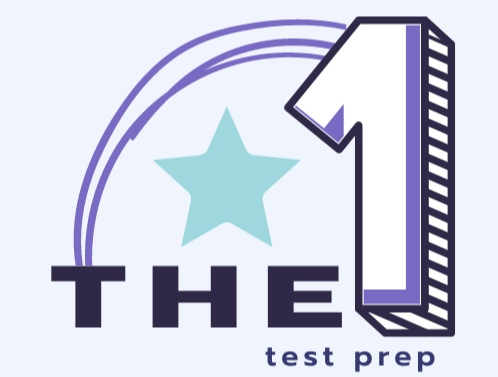Subscription
Clinical Self-Guided Digital Content + 1-1 Tutoring
The Top Deal!
All of the modules AND a 1-on-1 tutoring session each week!

Our great offer
Benefits of this subscription plan
Elevate your career
Whether you want to boost your career within the company you are working or grow at your own business by applying the latest strategies, this is the way.
Expert instructors
Our instructors do a great job of communicating and making it a more intimate arrangement. They are supportive and responsible in returning emails.
Satisfaction
Studying with us will help you learn how to create, capture and deliver value in a digital world. You'll leave with smart strategies to optimize your performance and satisfaction.
Flexible payments
Lots of payment options! Payment gateways usually charge fees, so check out the pricing of the payment gateway of your choice.
Material you'll love
Video interactions, note-taking, interactive ebooks, self-assessment, certificates, SCORM and much more.
Set your goals
Receive certificates by attending challenging courses. Our students' success is our best asset in showing the quality of our training.
Clinical Self-Guided Digital Content + 1-1 Tutoring
The Top Deal!
All of the modules AND a 1-on-1 tutoring session each week!
Copyright © 2024 The One Test Prep
All About: Visual Learning Style
-
Create graphic organizers such as diagrams and concept maps that use visual symbols to represent ideas and information.
-
Use different colored highlighters to make a visual association with material in textbooks (for instance, blue might signal important terms, while green might signal important dates or people).
-
Pay close attention to descriptive words in texts to help you recall information (for instance, you might remember details about the “Hero” in families dealing with alcoholism because of their willingness to take on the responsibilities that the alcohol abuser no longer does-then visualize them as an actual super hero).
-
Convert lecture notes into a visual format by drawing your own diagrams or by using symbols to organize material (© could signal all of the speakers remarks about cognitive behavior theory).
-
Make illustrated flash cards for vocabulary words. For example, you might remember the definition of ‘folie a deux’ (which is a delusion shared by two people) by drawing two people dressed up as Elvis on one side of the flash card.
-
Study in a place that is free from visual distractions.
-
Type your written notes from class using different fonts, bold print, and underlining to make the most important concepts and facts visually apparent.
-
When trying to remember information, close your eyes and visualize the information.
-
Watch films, especially documentaries, as supplements to your reading.
All About: Kinesthetic Learning Style
-
Get a partner to help you with role playing. This can be done for symptoms of a diagnosis, defense mechanisms, stages of development, ethical scenarios and much more. These serve as experiential learning tools for the kinesthetic learner.
-
Kinesthetic learning can be enhanced by physically changing your surroundings to include sitting in nature or crowded spaces. Take frequent study breaks to move around or exercise.
-
Get someone NOT trained in social work and demonstrate to them what you have learned. Teaching others can be the best way to learn.
-
Touch plays a key role in your learning, so try to create a tactile association with course material. You might use different colored post-it notes to mark important parts of your textbook or create flashcards (you will recall the information because you have the memory of creating the cards, and you will have the physical cards to hold and flip through, further reinforcing that memory).
-
Whenever possible, try to apply what you have learned to real-life situations.
-
While listening to lectures, imagine yourself moving about in some way related to the material mentioned. For instance, you might visualize yourself in the treatment session applying the Cognitive Behavioral Therapy interventions with a client who is experiencing depression or anxiety.
-
Assemble charts and diagrams of your work to further coordinate your learning process.
All About: Reading/Writing Learning Style
-
Concentrate more on written texts and captions than on illustrations.
-
Outline chapters prior to reading them, focusing on subheadings and any terms in boldface or italics to identify the author’s major ideas.
-
Write out lecture notes in complete sentences. This will help familiarize you with important concepts and facts, as well as fixing them in your memory.
-
Practice your recall by listing key terms and details.
-
Create flash cards containing key terms.
-
When preparing for exams, try writing a summary of what material you feel confident about and what material you don’t. Then, try writing out exactly what confuses you and why. This will help identify the material you need to focus on the most, and it may even lead you to a remedy for your confusion.
-
Re-write key social work terms and theories in your OWN words when taking notes and making flash cards.
All About: Auditory Learning Style
-
Tape lectures with the instructor’s permission to play back while studying.
-
Read your flashcards/notes out loud to yourself and tape yourself reading them for playback while driving or exercising.
-
Play music in the background while you study (thinking about this music may help jog your memory when taking an exam).
-
Repeat facts and definitions of social work terms over and over to yourself with your eyes closed.
-
Join or form a study group, so that you can discuss with others what you have learned.
-
Engage a fellow social worker in exam content discussion.
-
Make full use of the various podcasts included in your study system.

